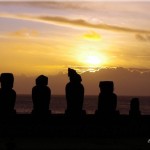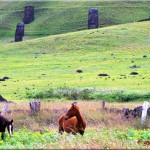Travelogue: Rapa Nui – Day 3 Highlights
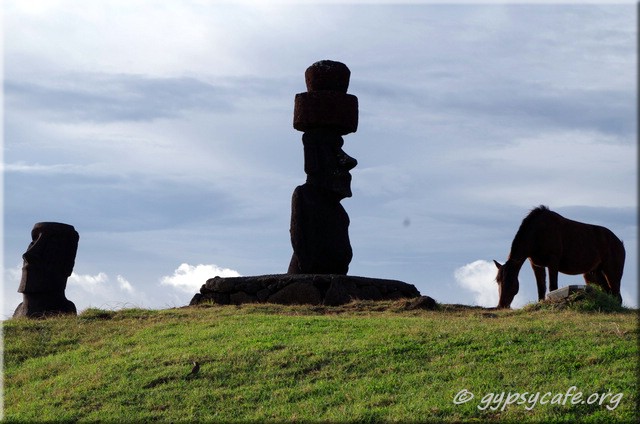
The following morning I set out early. It was raining all night and the clouds were just starting to clear. I came across a lonely horse next to a small moai, but soon encountered more. I passed by Tahai again and then continued northwards. The terrain was getting more rural.
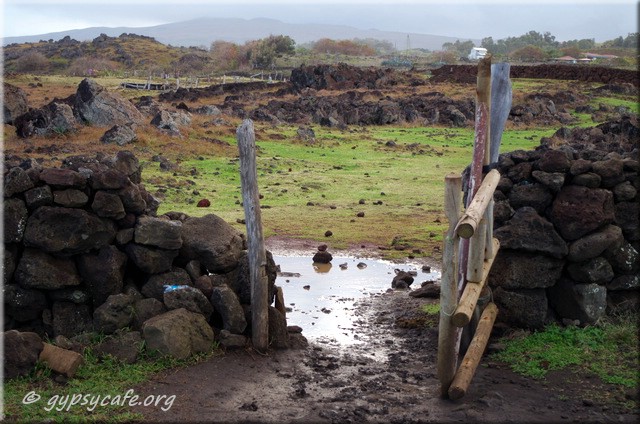
Shortly after passing through a country gate and stepping over pools of rain water I heard a noise. Looking back I noticed horses being herded by an off-road motor cycle rider. Onwards I went.

I continued my walk along country roads until opted for horse paths next to the rugged coastline and about an hour after walking it started raining. I huddled next to rocks and a cliff, against the direction of the rain and wind for a while. Fortunately I had rain-proof gear and managed to not get completely soaked.
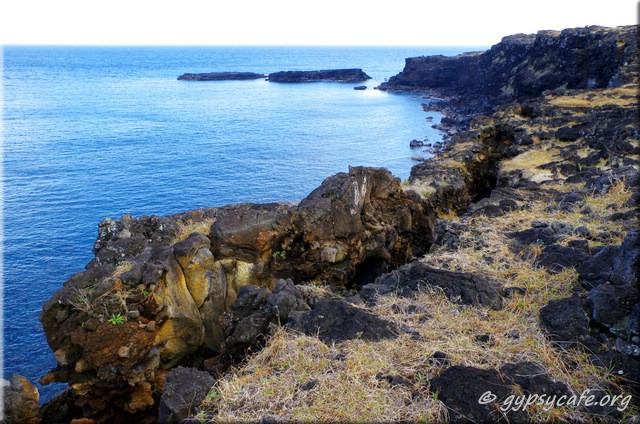
It was still dripping when I continued my walk and I stumbled upon (almost stumbled into) a small cave (not pictured), which was more like a hole with a stairway of stones down into a black space. “I could have sheltered in there!” I thought to myself. I then followed the coastline further (above).
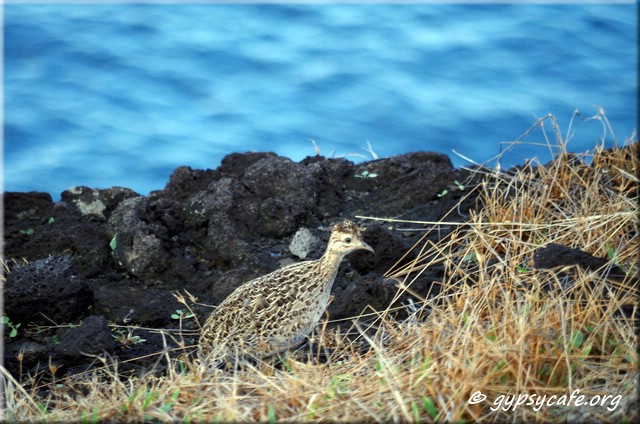
Not too long afterwards I noticed a bird “leading the way” through the grass ahead of me. This was in fact a Tinamou perdrix, also know as the Chilean Tinamou, one of the few bird species found on the island. They are apparently very shy and reluctant to fly, but this one allowed me to get close enough for a (zoomed-in) shot and walked ahead of me for a while.

By this time I was quite far away from Honga Roa and I stopped for a rest and to take it all in – especially the rough and untamed features of this volcanic island. If the reader looks closely he or she might notice that this picture was taken by the author’s shadow…
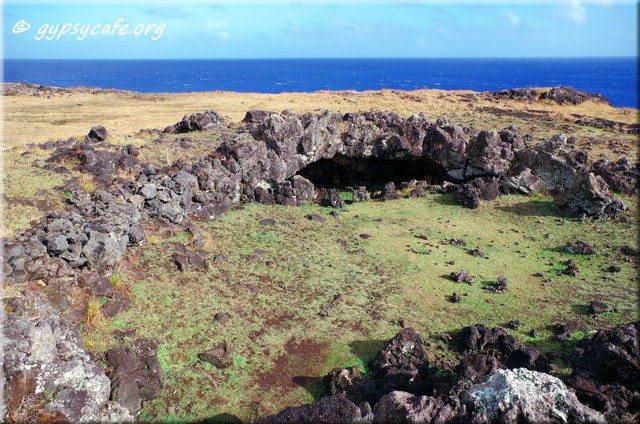
I stumbled across more caves and while appreciating the view two fellow hikers arrived, a Chilean couple. We decided to explore the inside of this medium sized cave together and then went our separate ways.
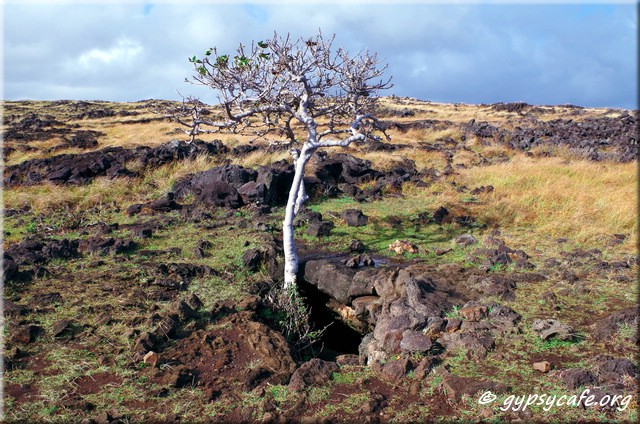
About 20 metres behind the opposite side of the previous cave there was a lonely white tree. The only one of it’s kind in the vicinity. On closer inspection it was growing on the edge (almost “on top”) of a small entrance to a cave – and this cave led into the cave we had just explored.
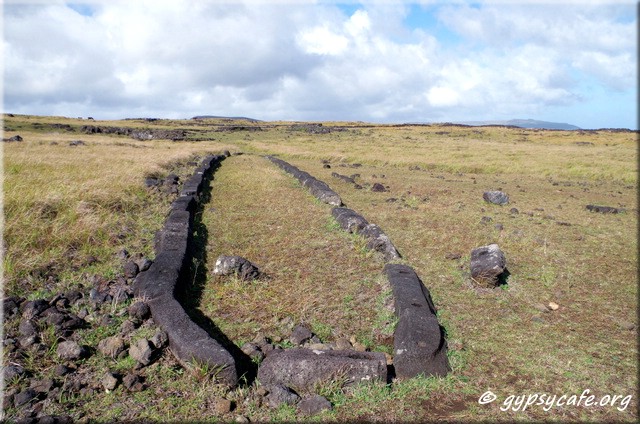
I continued walking and arrived at a large archaeological site which appeared to be the remains of an ancient Rapanui settlement. There were many interesting artefacts to see here, including the foundations of a Hare Paenga, or boat house – the name referring to it’s canoe-like shape.

I continued further until I “hit a fence” and had to change direction inland. Just as well, as it lead me to a country road (with horses) which took me to… more caves. Very impressive ones at that! They were so large that I could comfortably stand up and walk around in them freely.
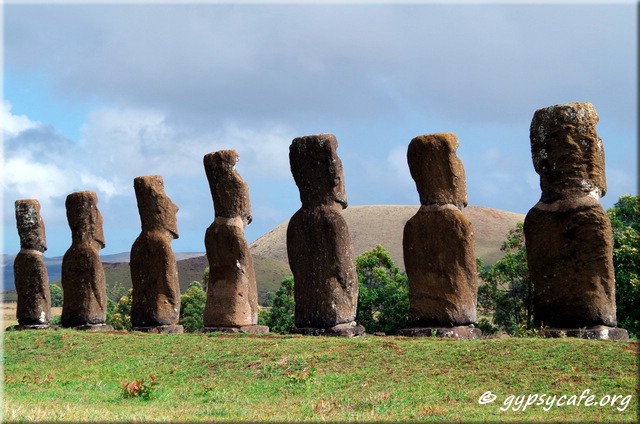
After walking quite a distance further, following the country road, I eventually arrived at a tarred road, which on turning left, took me to one of Rapa Nui’s prominent Moai sites. This is Ahu Akivi.
Contrary to popular belief – that Easter Island’s moai usually or always face the ocean, moai actually always overlook the village of the clan who erected them. These moai were meant to embody the spirit of their ancestors and to watch over them. Interestingly Akivi is the only site on the island where the moai do in fact face the ocean, but the ocean is more than 2.5 km’s away with ancestral land in between.

Behind Ahu Akivi, to the left, a wide horse “path” (more like a road) leads all the way up to Terevaka, one of the three extinct volcanoes on the island. I walked almost all the way up, except for the last bit, as it was actually a very flat gradually rising grasslands area, which provided for quite a good view of the island in the direction of Honga Roa (the town). I was running out of time though and had to get back. I was walking this entire island… no car rental or tours for me (!), or at least that was my intention and so had to always keep daylight in mind.
On the way back I bought some huge apples from a country stall to take with me the next day, and I got myself a couple of Rapa Nui Porters from a store on the way home, a rather good (and strong) local stout, which I enjoyed with dinner back at my self-catering accommodation. Although it drizzled on-and-off during parts of the day, it turned out really well and I was very satisfied. Another day beckoned and in anticipation of the crows waking everyone up at 4am, I turned in early, dreaming of ancient paths and good weather.
<< Return to Days 1 & 2
Continue to Day 4 >>
Exploring Easter Island
Photographs and text by Jean-Jacques Montagnier
Copyright © 2015 – All Rights Reserved – Gypsy Café
